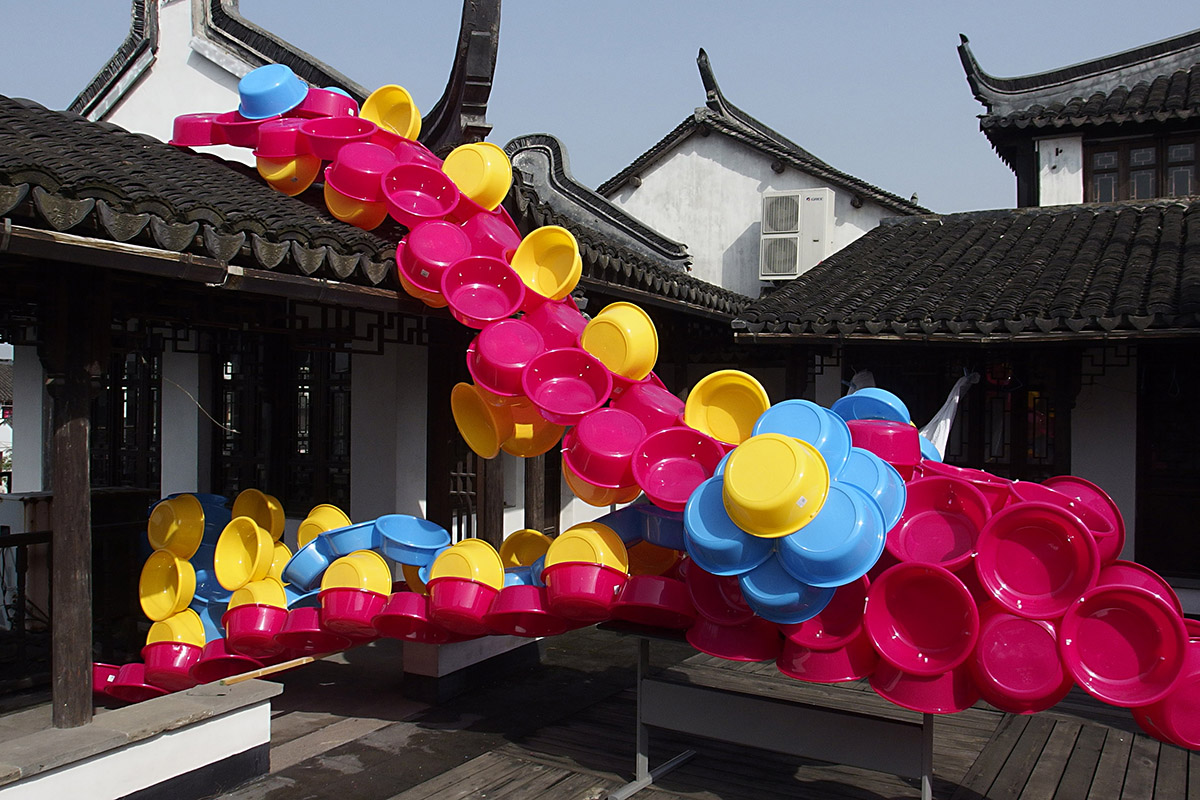

The Emperor’s New Clothes
Residency & Solo Exhibition
Zhujiajiao Himalaya Art Museum, Shanghai, CHL, 2015
Fundinged by
The Austrian Federal Chancellery, The Federal Ministry for Europe,
Integration & Foreign Affairs
Supported by
Enji
Ingrid Fischer Schreiber ASAP - Austro Sino Arts Program - Karel Dudesek
The spatial
collage The Emperor’s New Clothes collected fragments of the urban day-to-day
in Shanghai. Rainer Prohaska used banal plastic products to form various
objects and an immense dragon. Full of symbolism, this plastic monster threatened
to devour the historical building of
the Zendai Zhujiajiao Art Space.
Through its materiality, this omnipresent symbol of Chinese identity also acted as a symbol for the country’s production of low-budget plastic. The title The Emperor’s New
Clothes thus references China’s production policies that have led the commercial power to new prosperity. At the same time, conflicts of urban planning are mirrored in the collision of old building stock and mass products. Only a marginal part of China’s expanding urban areas have been able to withstand the construction boom of recent years. Of particular interest in this context are associations and connotations to processes of material recycling, since to Chinese percipients their role and everyday imagery can vary greatly from Western conventions. The found objects assimilated in the installation thus act as fragments of a Chinese everyday language rearranged by the artist.
Through its materiality, this omnipresent symbol of Chinese identity also acted as a symbol for the country’s production of low-budget plastic. The title The Emperor’s New
Clothes thus references China’s production policies that have led the commercial power to new prosperity. At the same time, conflicts of urban planning are mirrored in the collision of old building stock and mass products. Only a marginal part of China’s expanding urban areas have been able to withstand the construction boom of recent years. Of particular interest in this context are associations and connotations to processes of material recycling, since to Chinese percipients their role and everyday imagery can vary greatly from Western conventions. The found objects assimilated in the installation thus act as fragments of a Chinese everyday language rearranged by the artist.
